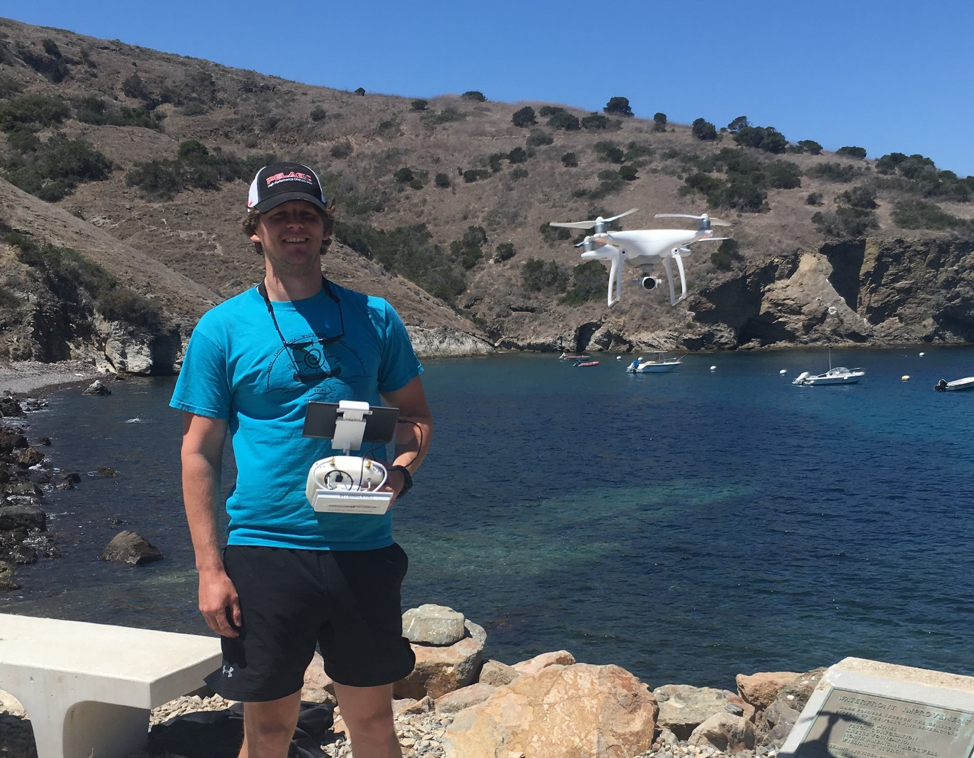By: Jack May
I am a graduate student currently finishing my first year working in Dr. Chris Lowe’s Shark Lab at California State University Long Beach. I am conducting my research on the influence of environmental and social factors on the behavior of leopard sharks aggregating along the coast of Southern California.
It is common in the warmest months for leopard sharks to group together in shallow warm water in relatively large numbers. The sharks occupying these aggregations are typically mature females. They are thought to be using the relatively warmer water in the shallows to increase their body temperatures. This increased body temperature can result in pregnant mature female sharks shortening the time that they are pregnant by increasing the development rate of their embryos.
I am using an unmanned aerial vehicle or drone along with temperature loggers spaced throughout the aggregation area on the seafloor to collect data on sharks from a bird’s eye view and determine what specific temperatures they are occupying. I am also investigating what social interactions may be taking place between individuals in an aggregation.
I am currently nearly a month into my first field season. My first study site was Big Fisherman’s Cove at the Wrigley Marine Science Center, but sea lions were observed killing leopard sharks and the sharks soon vacated except for the occasional individual.
I then did a road trip along the coast of Santa Catalina Island to ask people if they had seen any sharks at their locations. It is not until I reached my last stop at Emerald Bay where I found leopard sharks had been consistently aggregating. The staff there were very kind and allowed me to conduct research there. I then moved all my temperature loggers to that location and have been flying surveys there collecting video footage of the aggregating sharks swimming near my temperature loggers for almost two weeks.
When I download the temperature data I will be able to interpolate the seafloor temperature and determine what temperatures sharks were occupying and if the aggregations were located within the warmest water available to them at that location.


